Main menu
Common skin conditions

NEWS
Join DermNet PRO
Read more
Quick links
Aggressive digital papillary adenocarcinoma pathology — extra information
Aggressive digital papillary adenocarcinoma pathology
Author: A/Prof Patrick Emanuel, Dermatopathologist, Auckland, New Zealand, 2014.
Introduction Histology Special studies Differential diagnoses
Introduction
Aggressive digital papillary adenocarcinoma are acral tumours, which have a broad morphologic spectrum and may cause diagnostic confusion. Previously, tumours would be divided into adenoma and adenocarcinoma based on atypia, but this has been revised: even bland tumours may behave in a malignant fashion.
Histology of aggressive digital papillary adenocarcinoma
In aggressive digital papillary adenocarcinoma, sections show a dermally based tumour, which may connect with the overlying epidermis (figure 1). The tumour may be cystic, papillary, ductal or solid. The example illustrated here has a predominantly solid and ductal morphology with only focal areas of papillary formation. The cells are basaloid, show enlarged atypical nuclei, large nucleoli and increased mitoses (figures 1-6). Squamous metaplasia within the tumour may be seen (figure 5).
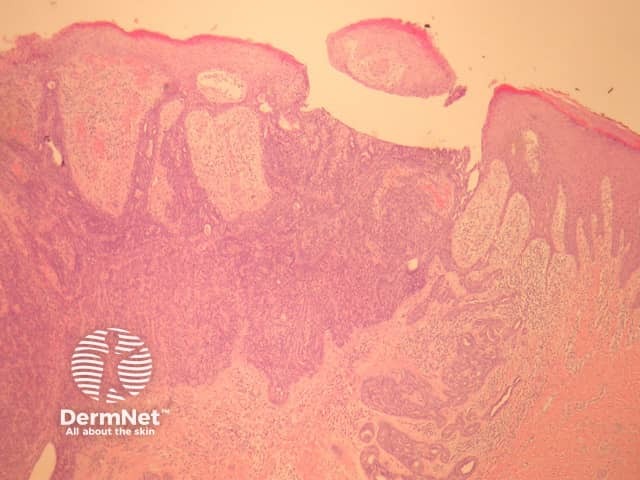
Figure 1
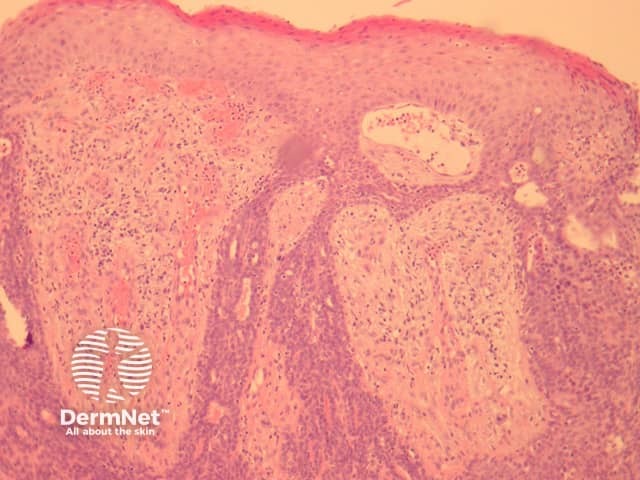
Figure 2
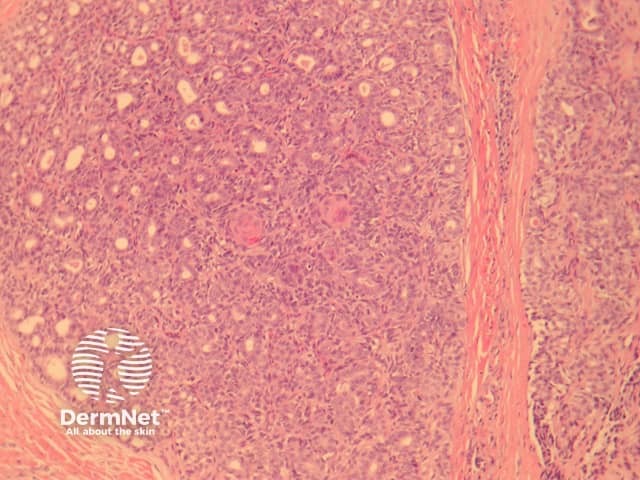
Figure 3
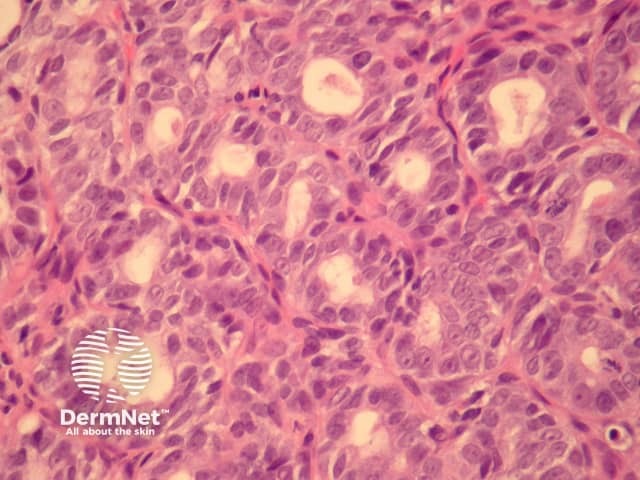
Figure 4
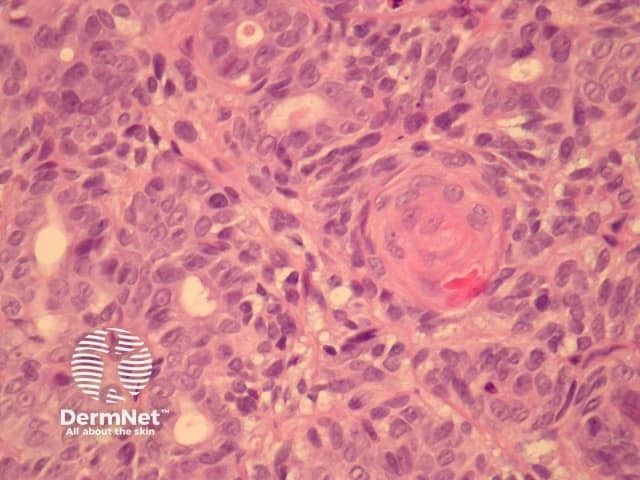
Figure 5
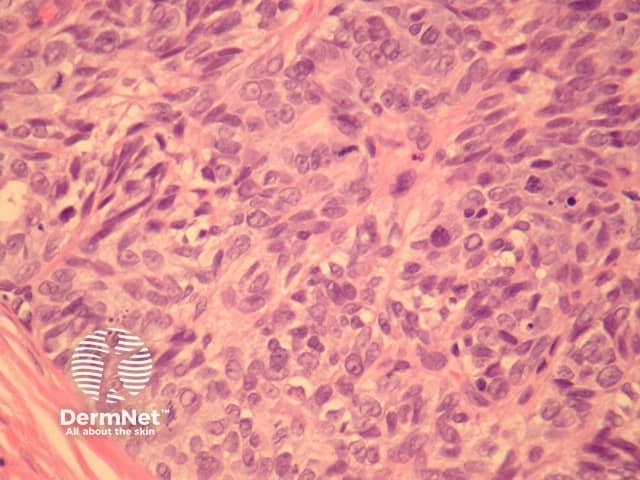
Figure 6
Special studies of aggressive digital papillary adenocarcinoma
None are generally needed. In cases which are encountered in lymph nodes immunohistochemical studies to rule out metastasis from breast, thyroid or gastrointestinal sites may be needed.
Differential diagnosis of aggressive digital papillary adenocarcinoma
Metastatic adenocarcinoma – Clinical history and immunohistochemical studies may be needed to rule out a dermal or nodal metastasis from another site.
Benign adnexal tumour – Some of these tumours can be deceptively bland. The acral site, infiltration of deep structures and epidermis and growth pattern helps in arriving at the correct (malignant) diagnosis.
References
- Pathology of the Skin (Fourth edition, 2012). McKee PH, J. Calonje JE, Granter SR
